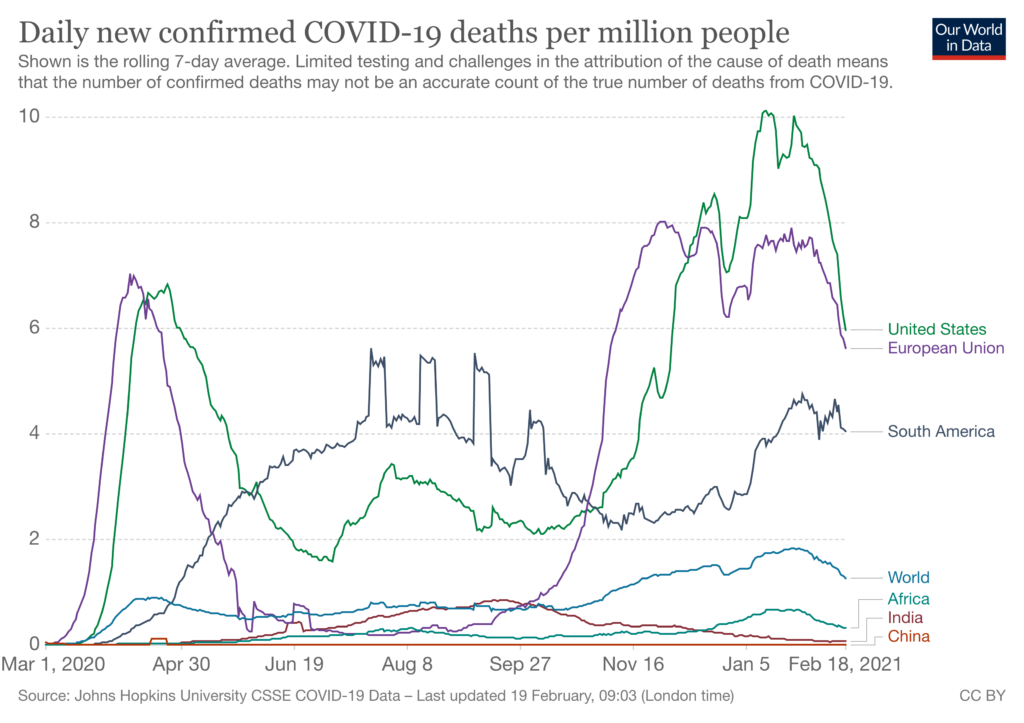Homeopathy at Home is a new book by Marcus Fernandez of CHE in London and is available on Amazon and other booksellers. It is a concise easy to read A to Z for the everyday.
Sensibly one should steer a clear course away from the topic of Autism and (and Homeopathy in context). It is without doubt a very sensitive topic today touching so many families.

This blog is prompted by a recent YouTube vlog from Dr John Campbell. He draws attention to recent reports from the CDC (Centers for Disease Control and Prevention) in the USA. They show the continued rise in autism, (see links to the reports at the bottom of this piece).
Robert Kennedy Jr, the US Secretary for Health, is to convene a summit of experts in an effort to better understand the problem.
Whether you dislike President Trump’s administration and / or John Campbell’s take on the matter is not important. The fact is that the CDC reports clearly show the magnitude of the growing problem in the USA. And a problem not just the USA but many countries across the globe.
In what follows, I wish to look at Homeopathy in the context of ASD. This too is not without controversy, so I’ll try and keep things factual.
Autism spectrum disorder (ASD) is a developmental disability characterized by difficulties with social interaction or communication and the presence of restricted interests or repetitive behaviors. ASD is recognized as a heterogenous condition with wide variation in the type and severity of signs, symptoms, and levels of support needed among persons with ASD (source CDC report)
Homeopathy is holistic system of medicine. Central to its philosophy is:
So, can Homeopathy assist in ASD cases? What follows is a look at three authors and homeopaths.
(1949?-2010)
Tinus Smits was a medical doctor in the Netherlands. Much of his medical practice through the 1990s and early 2000s focused on the treatment of autism. By the time of his untimely death he had seen over 300 cases. He worked with Isopathic, Homeopathic and Naturopathic therapies and clearly got results. He published a book Autism Beyond Despair just months before his passing.
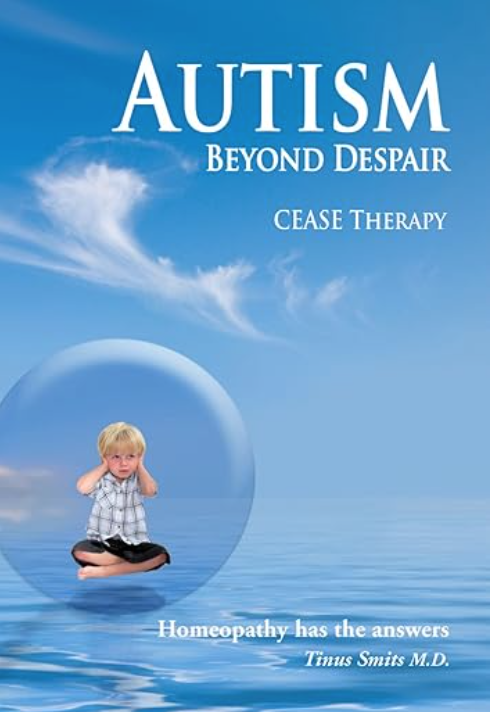
Seeing common patterns across his patient group, he developed a protocol. This he called CEASE, an acronym (Complete Elimination of Autistic Spectrum Expression).
In an age of acronyms it was an accronym of its time. However, the inference of cure or that ‘Homeopathy has the answers’ (see book cover) risked certain censure.
Challenge came after his death from those who saw autism differently. The situation was becoming more complex. Autism was increasingly seen as a spectrum of conditions (e.g. Asperger’s is accepted as being within that spectrum). It is a spectrum that ranges from high functioning to significantly challenged. In part this helps explain the rise in cases.
By 2019 The Society of Homeopaths, mindful of the changing climate, cautioned members who had trained in the protocol to moderate any claims.
Actually, ‘Protocols’ do not sit easily within homeopathic philosophy, and Smit’s work was far from rigid in application. Homeopathy is individualised medicine. Patterns may exist but no two persons are the same, nor respond to treatment in the same way.
Nevertheless, the work of the late Dr Smits was an honest effort to address a difficult problem.
Mike Andrews is on the Society of Homeopaths Register and has specialised in the treatment of Autism for many years. He published a book in 2014 titled Homeopathy and Autism Spectrum Disorder – A Guide for Practitioners and Families. He practices according to principles of Classical Homeopathy (which is individualised and does not follow protocols).

In the years following Smits death, there has been a shift towards seeing autism as a different way of thinking and interacting with the world, rather than a disability as such. The term neurodiverse has come into common parlance.
Andrews writes (Chapter 11), “As a practitioner I have always tried to understand the way that a child perceives the world and recognise that society, most particularly education, needs to change its response to the message that these children can bring to us”. One focus then has been to address “difficulties with some of the symptoms associated with their gift”. Controlling aggression and anger for example.
Chapter 3 looks at the use of Homeopathy in the treatment of ASD around the world, and reports clinical results. Importantly, in the subtitle to Chapter 5 (The Holistic Approach), ‘Staying the long haul’, he writes that “in Homeopathy we seek slow, steady improvements”.
He also reflects on Tinus Smits work and contribution.
Mikes contribution is significant and appreciated beyond the UK shores.
Last on my bookshelf (but there are others) is a 2021 publication Healing Complex Children with Homeopathy, from Angelica Lemke, Naturopath and Homeopath based in the USA (https://homeopathyforcomplexchildren.com/).
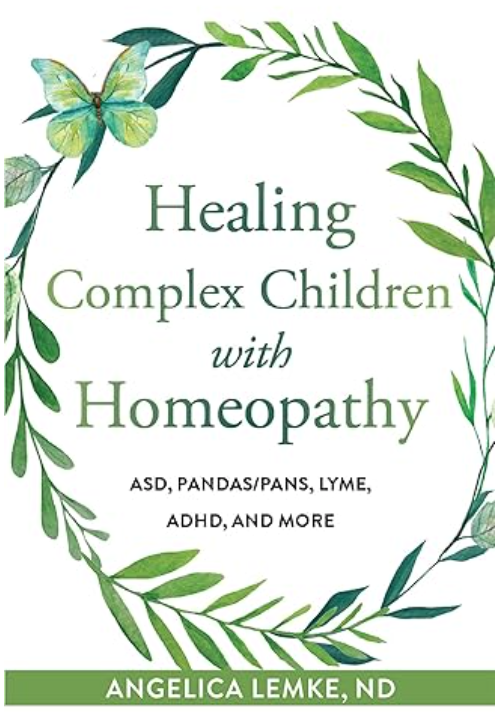
In its opening chapters this book examines (Chapter 1) ‘Healing with Homeopathy’, and (Chapter 2) ‘The History and Practice of Homeopathy’.
Subsequent chapters consider the different remedy groups (minerals, plant etc.). A useful final chapter (Chapter 10) lists ‘Remedies by Categories of Complex Kids’ (e.g. ‘Angry Children’).
Geographically, Angelica is on the wrong side of the ‘pond’, but none the less this is a helpful book.
My impression is that she is a very intuitive prescriber and healer. She explains that what constitutes healing is different from person to person; which may mean improved function or for those with greater challenges at least finding peace with their child.
She writes that “People who gravitate towards homeopathy seek greater self-sustainability, want less reliance on institutions to scaffold and support them and tend to question authority. They understand that there are many variables – including environmental, diet, medical, and ancestral – that contribute to health.”
She also notes that early treatment after diagnosis yields better results, which given the neuroplasticity of the younger brain makes sense.
The above texts cover some quarter of a century of the homeopathic treatment of autism.
Perseverance is the order of the day – probably measured in years. As Mike Andrews writes, “Slow Steady Improvements”.
The general schism between the orthodox biomedical model and Homeopathy is unfortunate and unhelpful to parents and carers. In an ideal world, the different perspectives would usefully be shared; the paths to unraveling the mysteries of autism better understood.
What RFK Jr’s gathering of minds will reveal, remains to be seen. For sure a better understanding is needed and awaited.
I have only seen two cases in my small practice. One child assuredly got benefit the other – who was high functioning – less so. In line with the authors above I reemphasise that progress comes in small steps over months and years.
Homeopathy is not biochemical medicine. It works energetically on the invisible life force or spirit which animates us from conception to death. It is this the tuning of this same life force that sets the pace of change.
Perhaps you would be interested in exploring Homeopathy? I offer a free 30 minute discovery call to allow you to investigate further.
https://www.hhs.gov/press-room/autism-epidemic-runs-rampant-new-data-shows-grants.html
https://www.cdc.gov/mmwr/volumes/74/ss/ss7402a1.htm?s_cid=ss7402a1_w
https://www.cdc.gov/mmwr/preview/mmwrhtml/ss5601a1.htm
https://www.priorygroup.com/mental-health/autism/autism-statistics
https://digital.nhs.uk/supplementary-information/2024/autism-prevalence-in-england-march-2024
The question is whether in homeopathy there is medicine for headaches. The answer is yes, but it is not as simple as taking Acetominophen best known as paracetamol (called Tylenol in the USA).

In last month’s blog I referred to an interesting article from the University of Oxford, titled What’s the Point of Paracetamol? Apparently, here in the UK, we each take about 70 tablets annually. Wow – that does seem rather a lot.
Over the counter (OTC) – that is non-prescription – analgesics (painkillers) fall into two categories. Non Steroidal Antinflammatory Drugs (NSAIDS) being one. We are all familiar with Aspirin which was first marketed by Bayer in 1899. Another common is NSAID Iboprufen dates from the 1960s. There are others.
On the other hand Paracetamol (and Calpol) is not classified as NSAID. The explanation that follows is from Yale Medicine. I must say I find the lack of certainty around how it works slightly amusing. The more I read, the less clear our understanding of the workings of our bodies seems to become! But I digress.
“As with NSAIDs, acetaminophen is thought to inhibit COX enzymes from making prostaglandins. The difference is that acetaminophen only works in the central nervous system; NSAIDs work in the brain and throughout the body. Acetaminophen is also thought to work by raising your pain threshold—it will take a greater amount of pain for you to feel it. It also targets the heat-regulating area of the brain to lower an elevated temperature, thereby reducing fever.”
The bottom line is that painkillers do little to address the underlying causes. And they are not great for the liver (which has to eliminate the drugs in time). So, be wary of regular use.
On the other hand if a toothache comes on and you cannot get an appointment with your dentist, then maybe needs must.
Back to headaches.
If you have followed my blogs on self-help homeopathy you will know that in homeopathy the aim is to match symptoms to the symptom picture of the remedy.
Unfortunately, this is a little more complicated that popping a paracetamol. Still, it is easier on your liver and gets closer to addressing the underlying factors.
One thing you need to have at home is a small remedy kit as mentioned in my earlier blogs on first aid. Both Ainsworths and Helios sell these.
There are a few practical and simple-to-use guides for those interested in using homeopathy. Here are two easy to use examples:

Homeopathy at Home is a new book by Marcus Fernandez of CHE in London and is available on Amazon and other booksellers. It is a concise easy to read A to Z for the everyday.
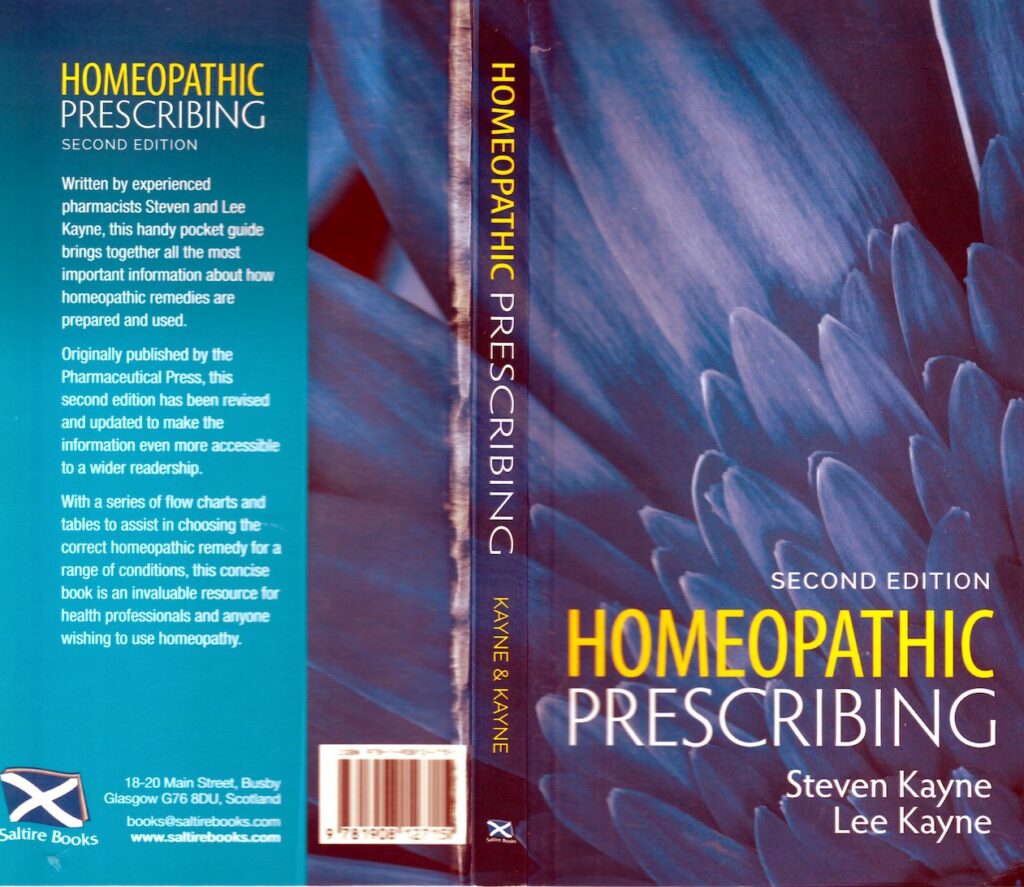
Homeopathic Prescribing is also available from Amazon or via the publisher. If you like flow charts rather than words this is a good choice.
Here are some leading indications in homeopathy for treating headaches using home kit medicines (remedies).
Instructions for taking remedies are given in the kits but the key thing to remember is that homeopathic remedies are absorbed throught the mucous membranes of the mouth. Simply put you allow the remedy to dissolve in the mouth. The sugar pills are a carrier for the remedy.
However, my suggestion is that you put two pills in a tumbler of water and stir (they don’t have to completely dissolve). Then take a sip every 15 minutes to start with (stir each time and hold in the mouth a few seconds) tailing off as symptoms improve.
If there is no improvement then select another remedy – this is analagous to trying another key to a lock.
Causation and what makes the headache better or worse are key consideration to choice of remedy.
One to think of where there has been exhaustive mental labour (Brain fag). Sensation as if the head was enormously enlarged. Flatulence and possibly diarrhoea (often associated with anticipation – e.g. pre exam nerves). Much better in the open air. May crave sweets which then diagree.
Thobbing pain focused on the forehead. Head hot. Cannot bear noise or a bright light. Worse from lying down. Congested state. Pain tends to be right sided. More likely to start late in the day. Think of this remedy in sunstroke
Keynote here is worse from slightest motion. Wants to lie perfectly still. Very thirsty. Irritable (“leave me alone”). Cause may be constipation. Pain tends to be over left eye. Better for pressure, so one lies on the painful side. Begins in the morning afer opening the eyes.
The Cocculus headache starts at the back of the head (occiput) and neck. Cannot lie on back of the head (i.e. worse for pressure). Association with motion sickness after travelling (hence vertigo). Nausea. Some affinity with irregular menses. Eating or drinking aggravate.
Headache starts in the back of the head, extending forward causing a bursting sensation in the forehead. Keynote for this remedy is a dull, drowsy and droopy state (especially eyelids), which makes it also a remedy for classic ‘flu. Worse for emotional upset (bad news). Better for head raised high and from urination.
Pain as if a nail driven through the side of the head. Pains shift. Curious contradictory symptoms e.g. sore throat better on swallowing. Key remedy if headache is associated with grief or disappointment. Much sighing. Cannot tolerate smoke fumes. Better for warmth.
Neuralgic headache (consider in toothache). Intermittent and sharp pains. Better for warmth and pressure.
Periodic headache of great severity. Visual disturbances and very sensitive to light. Worse sunrise to sunset and better for sleep. May have an emotional cause. Like Ignatia, there is an association with grief, but of a deeper longstanding type.
Pain in back of the head or over the eyes. Remedy for overindugence (e.g. hangover). Also ‘burning the candle at both ends’ – hence caused by overwork, maybe stimulated by excess coffee or alcohol. Hypersensitve. Worse after sleep.
Typically a female remedy. Rapidly shifting pains is a keynote. Better in the open air and worse indoors, especially in a warm room. Generally better for cold things – drink (though not thirsty), food and applications. Easily brought to tears.

If you wish more guidance, or to explore the potential benefits of Homeopathic treatment, please book a discovery call via my website or mail me at [email protected] and I will respond by return
Can Homeopathy help with the stress and anxiety of big events like examinations? Well, yes it can.
As we reach the summer solstice, I now realise that I should have written this blog a little earlier (sorry!) as the exam season is almost over. It will come around again.
In any case stressful events are always with us, so the topic of this blog extends well beyond the classroom.

Continuing with the series on homeopathic remedies in a typical home first aid kit, in this blog I focus on kit remedies that have a particular affinity to exam stress.
For more on the benefits of purchasing a first aid kit of basic homeopathic remedies see my earlier blog Family Care with Homeopathy
Exam time is often marked with anxiety that can impact on performance. Anticipatory fears can cause both emotional and physical symptoms. Homeopathy offers remedies for stress and anxiety that are tailored to the needs (emotional and physical) of the student.
Classical homeopathic prescribing considers the following:
Consider homeopathic treatment like finding the right key for a lock, if after a taking the remedy for a short while (say one pill morning and night for 1-4 days) there is no response, then try another.
Remember that homeopathic medicines are absorbed through the mucous membranes of the mouth – not the gut – so you let the tablet or pill dissolve under the tongue.
A useful tactic on the day of the exam is to dissolve one pill in a water bottle (shake well) and sip during the course of the exam day.
The Aconite picture is always one of sudden onset. Consequently, Aconite is useful when the student has a panic attack that comes out of the blue, helping to stabilise the emotional upheaval quickly.
The keywords for Arg. Nit. are anticipation and uncertainty. Well, what else at exam time! It helps those who feel hurried and fearful of failure despite being well-prepared.
The Arsenicum picture is one of anxiety with restlessness and a compulsive concern for order. The student cannot settle and needs to check and recheck they have all the bits and bobs they need on the day.
It is by the way, the No1 remedy for sickness and diarrhoea after eating something that disagreed – so one to have with you on holiday.
Gelsemium is better known as an influenza remedy. The sufferer is weak, shaky and apathetic. A sort of paralysis results – a type of fear, that is characterised by ‘why bother’. There can also be diarrhoea from emotional excitement. It is a remedy for courage.
Here the keynote is lack of self-confidence and apprehension, although the student may outwardly show bravado. This student may over-prepare because they’re worried about their performance. Lycopodium is well known generally for gastric symptoms, especially bloating.
Although a homeopathic remedy in its own right, this is better known as a Schleussler tissue salt. It is a nerve nutrient, beneficial for students who are exhausted mentally from overstudying. It helps relieve feelings of stress and helps in restoring the brain’s energy levels.
While homeopathy is helpful in addressing exam stress and anxiety, don’t forget the basics. Maintaining a balanced lifestyle is key.
Fatigue exacerbates anxiety; 7-9 hours of quality sleep each night is crucial. Avoid late-night cram sessions and setting a consistent sleep schedule supports the body’s ability to manage stress.
Fuel the body and mind with ‘clean’ food. Eat nutrient-dense whole foods like vegetables, fruits, lean proteins, nuts and seeds. Staying hydrated and limit stimulants like caffeine. This also helps regulate anxiety levels.
Constant studying leads to burnout. Take short 10-15 minute breaks every 90 minutes to recharge. Get some fresh air, meditate, or go for a walk to clear the mind before diving back in.
I recently listened to a Medical Doctor who suggested this:
Put your right hand between the thumb and forefinger of your left hand. Then gently place your right thumb in the middle of your left palm, and your middle finger on the outside of the left hand. Now join the tips of your left thumb and left middle finger together.
Why not give it a try!
We have looked at some homeopathic remedies that can help with the sort of short term anxiety that it typical of exam time.
Howevere, Homeopathy also plays a crucial role in the treatment of deeper seated anxiety states. Here constitutional treatment, involving a deeper assessment of the individual’s overall health, temperament and symptoms. Whilst anti-depressant medications has its place, the homeopathic approach (which takes time – there is no magic bullet) should yield long term benefits and restore harmony.
If you have a deeper seated anxiety problem and wish to explore the homeopathic approach, please book a Free Discovery Call via my website.
Waldorf Education and Anthroposophy may be unfamiliar subjects, but nonetheless are very pertinent to modern times.
The Society of Homeopaths was honoured to listen to pediatrician Dr Micheala Glöckler at their recent conference in London.

German born Dr Glöckler now lives in Switzerland and has a deep passion for Applied Anthroposophy and the availability of choice and cultural diversity.
Anthroposophy (Anthro-po-sophy) is a philosophical system associated with polymath Dr Rudolf Steiner (1861-1925). The word means human (anthropos) wisdom (sophia).
Steiner had great respect for Dr Samuel Hahnemann (1755-1843) who documented the principles of Homeopathic Medicine. Indeed Anthroposophic medicines are low potency homeopathic preparations. In the UK, Weleda is one well know name in the manufacture of both homeopathic and anthroposophic medicines.
While writing this blog, I found a interesting (but quite long) article comparing Steiner’s work and Homeopathy.
Dr Glöckler spoke with great passion through the morning session, almost without notes, surely challenge enough, without that of speaking in a foreign language. Gut gemacht!
Waldorf Education follows the Anthroposophy of Rudolf Steiner. The name comes fom the town of Waldorf, a town near Stuttgart.
Wikipedia gives a good overview. Do bear in mind that the Wikipedia perspective is coloured by their philosophy which is not as definitive as they would like you to believe.
Children according to Steiner-Waldorf teaching, learn in three ways: imitation; experience (often painful); and, insight or understanding. Education should be age appropriate.
Education should also be in the real – not the digital world – and that real world incorporates an awareness of Higher Worlds (i.e. the spiritual).
Dr Glöckler warned us not to delegate our potential (or consciousness) to the internet; to do so risks delegation to the State and potentially the control the powerful and often negative forces.
Healthy learning is active (analogue) not passive (digital). Ultimately what we truly understand is self-education.
She moved on to consider in closer detail a child’s development. There are three seven year cycles: first (0-7) brain, then emotional (8-14); and finally consciousness and responsibility (15-21).
As a aside (but relevant) children’s author Michael Morpurgo also had something to say on the value of early years education on the BBC yesterday.
Having been a school governor for almost twenty years, I can say that national curriculums and such like are eternal subjects of debate. The rise in home schooling rather demonstrates the dissatisfaction with a one size fits all view-point.
All across Europe – and even in land of her birth – mainstream medicine increasingly denies the teachings of Hahnemann and Steiner. The reason, Dr Glöckler explained, is a failure to understand the working principles. At the core is a battle of philosophies: the technology focused trans-humanistic view versus the spiritual path.
Each human being has its unique spiritual destiny which is ignored at our peril. She urged everyone to campaign for the legal status of integrative medicine (see https://eliant.eu/en/).
Modern medicine, for all its benefits, focuses solely on the physical body. This approach is wonderful in emergency medicine, when life is threatened. However the nature of disease – or better ‘dis-ease’ – is much more complex. Your physical symptoms can have roots in anything from infection, through emotional issues to your genetic inheritance.
The book shown below provides some excellent guidance on how parents and carers can treat illnesses and guide their children.
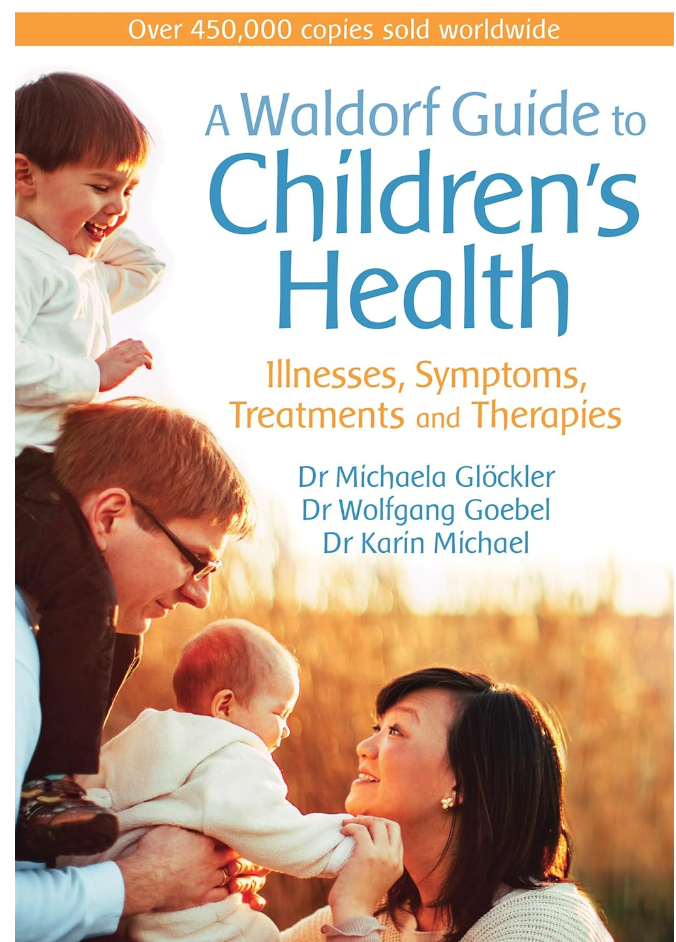
Dr Glöckler coined the term ‘deficitarian’, stimulating the ‘little grey cells’ of the audience to action!
The underlying philosophy of Waldorf Education and Anthroposophy recognises that humans are not perfect by nature; this is both our deficit (hence ‘deficitarian’) and our catalyst to growth. The ‘deficit’ then, is the gap between what we are and what we must become.
Life, health and illness extend beyond the domain of modern medicine with its physical / material focus. Life is neither visible nor material. Illness may be inconvenient, but it is also a rebalancing process and necessary for long term health (hence a child’s fever is ‘healthy’).
As humans we live in constant interaction with our environment – from the microcosm (e.g. microbiome) to macrocosm (e.g. cosmos). A focus on the physical body alone denies the constant interplay between that body (mostly water) with its metabolism (warmth driven), and the immaterial etheric (life force), astral (emotional) and thought processes. Ultimately, we live a life of thoughts.
Dr Glöckler retold a story about Paracelsus a notable 16th century Swiss physician. He, together with five other medical men, discuss the cause of death of a man during a cholera epidemic (but substitute any disease you like). In abbreviated form the story goes thus:
The question is, ‘Why did the patient die’?
The first doctor says: ‘It is the [cholera] bacteria that caused the death – obvioulsy the patient died of cholera’
The second doctor responds: ‘As only 10% of those infected from the contaminated water died, you cannot say this. The death could be due to poor natural immunity’.
The third doctor says: ‘Positive feelings strengthen the immune system, and negative weaken. The patient was frustrated in his soul and was not in balance. This is the cause.’
The fourth doctor says: ‘All well and good, but actually the patient’s ego (spiritual identity) was weak, thus his tolerance of frustration was undermined. At the core, this is why he died.’
The fifth doctor then chips in: ‘I looked up the astrological tables; the stars point to a lethal crisis. His life was over, it was his time to die.’
Everyone now looks to Paracelsus, who smiles and says: ‘You are all correct, there are five causes of illness and five ways to health. A good doctor must know all of them equally well and walk with each person the most promising path to healing.’
In this parable, Paracelsus demonstrates the complexity of the human constitution.
Homeopathy is (w)holistic medicine, its consideration goes much further that the orthodox diagnosis.
The latter has value in determining the trajectory of the ailment and the urgency of intervention. However, all too often the outcome is management of symptoms and a failure to consider the underlying cause.
For this reason the initial homeopathic consultation takes time. Its purpose is to try and reveal the underlying cause and reestablish harmony in the body.
I recall one case when attending the International Academy of Classical Homeopathy in Greece, where a patient’s problems originated some decades in the past. The lady had suffered physical assault from her father or step-father. The college principal, Prof. Vithoulkas, opened with the remedy Arnica – a remedy know for repair of deep bruising. Why? Because the body had held that memory.
If you judge you have never been well since some event in the past, physical or emotional, and would like to find out whether homeopathy might help you, please book a discovery call via my website.
The use of homeopathy for uncomplicated urinary tract infection or UTI is the subject of this article. It is a condition more common in women due to the relatively short urethra (tube from the bladder to the outside). A common name for this type of infection is Cystitis.
Urinary tract infection and retention in men is often secondary to another issue such as prostate problems.
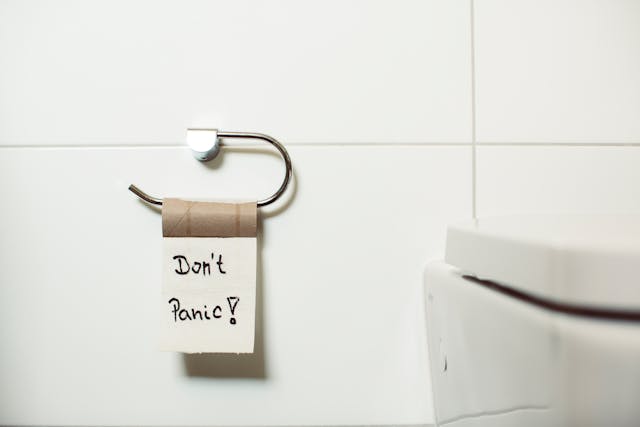
If you follow my blogs you will know that Classical Homeopathy follows the ‘law of similars’. Simply put this means that the characteristics of the ailment as experienced by the patient must match the ‘picture’ of the homeopathic medicine / remedy.
The typical UTI ‘picture’ is common; most often a burning pain when having a ‘wee’.
Continuing with this series on useful remedies in a home first aid kit, in this blog I focus on those homeopathy kit remedies that have a particular affinity for urinary tract infection. For more on the benefits of purchasing a first aid kit of basic homeopathic remedies see my earlier blog Family Care with Homeopathy

Classical homeopathic prescribing for acute complaints considers the following:
Consider homeopathic treatment like finding the right key for a lock, if after a taking the remedy for a short while* there is no response, then try another.
*A simple approach is to place one pill of the remedy selected from the first aid kit into your half litre water bottle and shake well. Sip this on and off through the day.
Remember that homeopathic medicines are absorbed through the mucous membranes of the mouth. You let the pill dissolve under the tongue or in water swish briefly round the mouth before swallowing.
If there is fever, lower back pain or a general unwell feeling, there may be a deeper seated infection.
This warrants a visit to your GP to rule out anything more serious. He/she can arrange a urine analysis and prescribe antibiotics if necessary. While waiting for an appointment trying one or two of the remedies described below is worthwhile.
In his book, The Family Guide to Homeopathy, Dr Andrew Lockie says the term Cystitis is used rather loosely.
Cystitis proper, is an inflammation that can extend along the whole urinary tract from kidney, through bladder to urethra This usually results from E.Coli bacteria transferred from the bowel (more easily caused in female anatomy).
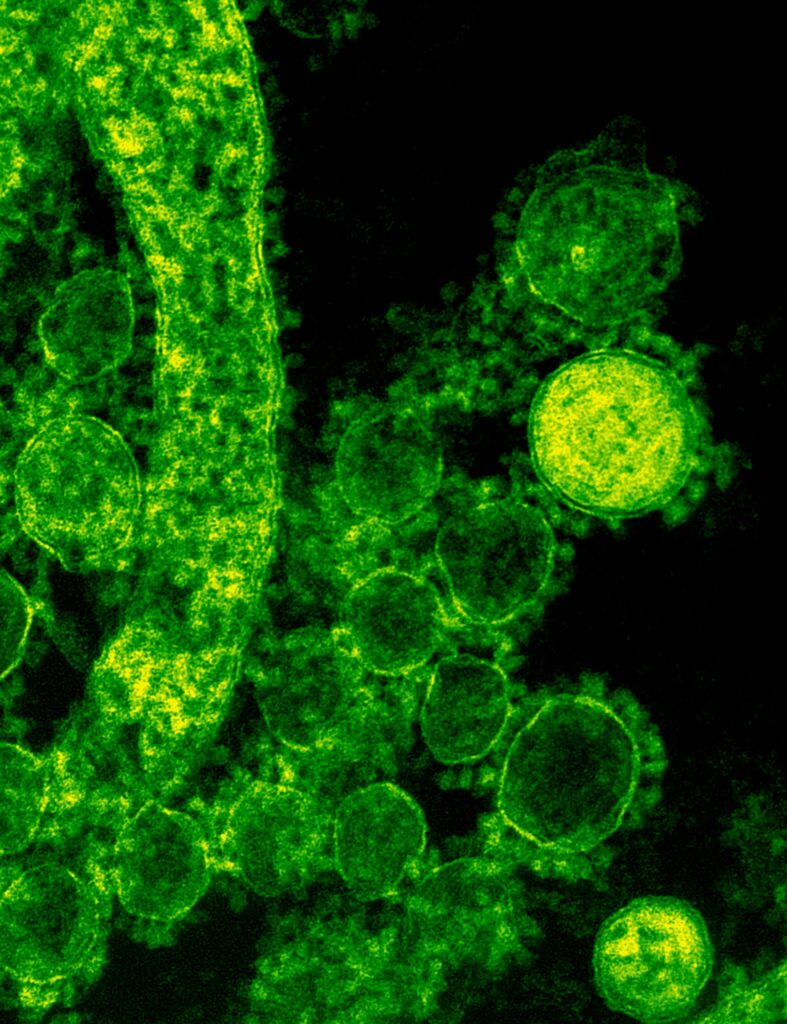
Then there is Urethritis which is an inflammation of the urethra itself.
Finally, there is Urethral Syndrome, a slightly ambiguous term. Here causation is less clear and bacteria are not considered the underlying cause.
Ainsworths (see above) and Helios sell first aid kits that contain several useful remedies.
By the way, looked after (keep in a cool place away from strong sun and heat) remedies will keep for ten years or more. The use-by date is purely a regulatory requirement.
Listed below are some remedies typically found in homeopathy that should address urinary tract infection.
The characteristic burning pain is common to most, so some trial and error may be necessary to find the remedy that best works for you. Try and think holistically – that is to say the combined mental / emotional and physical nature of the patient.
The No1 remedy to try. Severe, burning, cutting pains in the lower abdomen (neck of bladder). Cloudy dark urine . Non stop urge to urinate and an inability to empty the bladder properly.
Similar to Cantharis as regards the urinary symptoms. Stinging pains – last drops burn and smart. Symptoms worse for heat. Apis personalities tend to be thirstless, cannot think clearly, are fidgety, tearful, whining and cannot tolerate heat. Think of how one reacts to a bee sting.
Pain extends from kidney to bladder. Urethra feels as if swollen. Also resembles Cantharis and should be tried instead if there is no improvement. Arg.nit types love sweets, can be impulsive and have a way with words (‘silver’ tongue. Argent=silver).
Another remedy associated with ‘burning pains’. A major remedy in homeopathy systemically, meaning that there is general malaise (it is valuable for many aliments from skin, to food poisoning to asthma).
The patient is chilly, restless yet easily exhausted. The bladder may feel as if paralysed (so urine scanty). The remedy has a curious modality in that symptoms worsen after midnight.
Another major systemic remedy in homeopathy. Urine retention, and scanty yet constant urge. Involuntary passage. With Belladonna the patient is always hot (contrasting the chilly Arsenicum) and potentially delirious. There may be spasm and cramp-like pains which come and go.
Frequent urge to pass urine, which produces nothing (paralysis of the bladder). Then involutary passage or urine made worse with cough or sneeze. Itching around urethral opening, perhaps with vaginal discharge.
Attack comes on after sexual intercourse or after catheterisation for an operation. Burning sensation almost constant, even when not urinating.
Dr Lockie advises increasing fluid intake to 3 litres daily until urine is the normal colour and there is no discomfort. Cut down or cut out tea and coffee.
As acidity is the cause of the burning, you should try and make your urine more alkaline. He suggests taking a teaspoon of bicarbonate of soda in water twice a day.
Citrus fruits are acid and aggravate. He also notes that potatoes, tomatoes, beetroot, raw carrots, asparagus and strawberries are also problematic.
The herbal products from Vogel have been around a long time, and may also help. You may will probably be aware of the benefits of cranberry juice and possibly D-mannose.
If you are prone to urinary tract infections, then constitutional homeopathic treatment can help. If you wish to discuss this then please book a free 30 minute discovery call from my website.
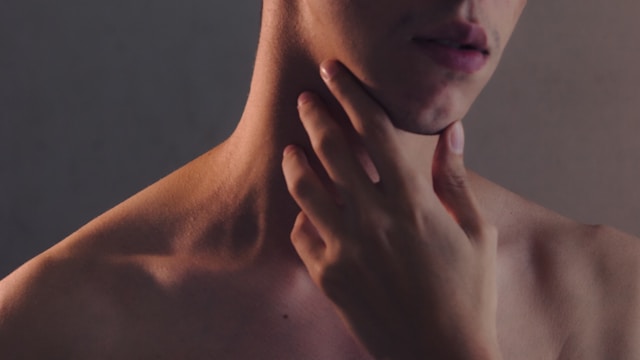
Are there homeopathic remedies for a sore throat? Indeed there are. If you follow this blog you will know that Classical Homeopathy follows the ‘law of similars’. Simply put this means that the characteristics of the ailment as experienced by the patient must match the ‘picture’ of the remedy (homeopathic medicine).
Many homeopathic remedies have a sore throat ‘picture’. Fortunately, there is overlap between the various remedies such that absolute precision is not required.
Continuing with the series on remedies in a typical home first aid kit, in this blog I focus on kit remedies that have a particular affinity to sore throats. For more on the benefits of purchasing a first aid kit of basic homeopathic remedies see my earlier blog Family Care with Homeopathy

Classical homeopathic prescribing for acute complaints considers the following:
A sore throat is a blanket term for inflammation or infection affecting the tissues of the throat. Typically affecting the tonsils and adenoids. These specialised tissues are part of the immune system which guard the airway (Pharnyx). Sometimes there is a loss of voice if the infection spreads to vocal box/chords (Larynx) located below the Pharnyx. The diagnosis reflects the location, hence Tonsilitis, Pharyngitis, and Laryngitis.
The offending microbe is often a virus, but it can be a bacterium (hence “Strep” throat).
Wikipedia gives a good overview on the orthodox treatment of tonsilitis.
The typical symptons of pain on swallowing, swollen tonsils, a dry throat and possibly fever are doubtless familiar. The formation of an abcess behind a tonsil is known as Quinsy and is particulary unpleasant and may make jaw movement painful.
Most sore throats self-resolve in a week or so. A course of antibiotics is the orthodox treatment (where the cause is bacterial) and should always be considered in urgent cases. If there is severe pain with significant difficulty swallowing or difficulty breathing NHS guidance is to go to A&E.
However, a well selected homeopathic medicine can usually reduce the duration of any infection.
By the way, it is perfectly possible and appropriate to take homeopathic medicines alongside orthodox treatment. Homeopathic medicines function in a different way to antibiotics or analgesics (pain killers). There is no conflict and in this context they are indeed complementary.
Homeopathic medicines are neither antibiotic or antiviral in the conventional sense. Rather they stimulate the immune system of the body to overcome the infection.
We need to be midful of antibiotic resistance and use our antibiotics appropriately.
If you suffer from recurring throat infections, this is probably a sign that your body is struggling to restore and maintain good health. Professional homeopathic care can assist your body’s own defences, increasing resilience and breaking the cycle of repeated infections. In homeopathy we call this Constitutional Treatment.
If you want to discuss this further, you can book a free 30 minute discovery call with me here.
Described below are ten of the homeopathic remedies useful in sore throats which you will find in most homeopathic first aid kits. The one which will engage your body’s healing process is the one which most closely matches your specific symptoms.
Consider every homeopathic medicine a ‘key’. If it fits the ‘lock’ you will get some improvement in a couple of hours. Falling asleep is a good sign of healing taking place.
If there is no improvement, there is no harm whatsoever in trying another remedy. As sore throats share characteristics, matching the general characteristics of the remedy may best aid selection.
The first three (Aconite, Belladonna and Apis) I have written about before in more general terms.
These two remedies are similar – yet different. Both can have an associated with high fever.
Aconite is often the remedy to give in the early stages of infection when the onset of symptoms is sudden. A typical cause if becoming chilled when hot.
The general characteristics of Aconite are fear, restlessness and anxiety.
The onset of symptoms is sudden; within just a few hours of exposure to the cause. The throat, it is dry, very red and constricted. Cold drinks bring some relief. There is an initial affinity for the left side (e.g. left tonsil).
The general characteristics of Belladonna are heat, redness, throbbing and burning. In a word violence. Children have high vitality which means that their immune systems respond accordingly (i.e. violently!). Belladonna is a ‘must have’ children’s remedy.
The onset of symptoms is somewhat slower than that for Aconite. Though hot, the patient feels chilly and wants to be covered (‘Aconite’ prefers the cool air).
There is anger / irritability and the affinity is for the right side (contrasting Aconite). The patient is not so thirsty but may take small sips of water (lemon flavour appeals) to ease the dry throat and the continual desire to swallow.
Apis is a homeopathic medicine made from the venom of the bee.
The general characteristics of Apis match with the effects of a bee sting: burning-stinging pain and swelling.
This is a medicine for highly inflamed and swollen tonsils, perhaps with ulceration. Swallowing is difficult. Patients are not especially thirsty but sucking ice cubes may help. This patient is restless (think ‘busy bee’).
p.s. It is also a useful medicine in urinary tract infections (along with Cantharis)
The general characteristics of Bryonia are dyness (‘DRY-BRY’), great thirst, worse for movement and better for rest. The Bryonia patient can be irritable.
The onset of illness in the Bryonia patient is slower. Perhaps 24 or 48 hours after exposure to the cause, which may be damp or autumn weather (hot days / cold nights).
This slower onset reflects the lower vitality of the patient. Where the Belladonna picture often matches the child, Bryonia is more suited to the adult. Soon there is much catarrh. Compared to Aconite, Belladonna and Apis the throat has a duller hue.
The general characteristics of Gelsemium are dizziness, drowsiness and dullness. A state of apathy and weakness (‘Worn-out’).
These characteristics often match the influenza picture. Again the onset is slower. The tonsils are red and swallowing is difficult due to muscular weakness. There is itching in the palate and nose and a sense of a lump in the throat. The voice may be weak either from the nervous state or catarrh.
(p.s. My son at about age 4 – now 34! – responded almost instantly to this remedy. I had previously tried Belladonna to nil effect and was on the cusp of calling the doctor.)
The general characteristics of Hepar Sulphuris are suppuration and hyper-sensitivity (cannot bear the affected part to be touched). This is reflected in the impulsive mental state (‘touchy’).
This is a remedy where the tonsils and glands are swollen, possibly with pus and the throat feels constricted. There is a very typical sharp, stitching, splinter-like pain in the throat (described as a stuck fishbone or like swallowing broken glass), which often affects the ears when swallowing. The throat is sensitive to touch and cold. The symptoms are relieved by hot drinks.
The general characteristics of Lachesis (from a snake venom) are loquacity (talks constantly), suspicion and again great sensitivity to touch. The collar must be very loose.
This is a remedy for Quinsy with ulcerated tonsils. The throat of the Lachesis patient is dry and has a purplish colour. The onset of symptoms is on the left side and the pain extends up into the ear. There is an inability to swallow and a curious feature that liquids cause more difficulty in swallowing than solids. Another curiosity is that symptoms tend to worsen after sleep.
The general characteristics of Merc.sol. (as typically abbreviated) are seen in the metal of the same name; the only metal that is liquid at room temperature. It reacts to temperature (mercury thermometer) and is generally unstable (trembling).
This is another remedy for Quinsy. The sore throat requiring this medicine is putrid, swollen bluish-red, perhaps with ulceration and pus. Despite the pain, saliva must be swallowed. There is a metallic taste in the mouth. Much perspiration is another feature.
The general characteristics of Lycopodium are careful, cautious, conscientious. There is apprehension with a certain lack of confidence, and a tendency to digestive troubles and flatulence.
Lycopodium throats tend to begin on the right side with swelling, suppuration and ulceration (which can affect the voice). There may be sensation of a ball in the throat. The patient is better for warm drinks.
The general characteristics of Silica are a yielding nature, with weakness and poor assimilation of nutrients. Ulceration with poor healing may result. There is great sensitivity, anxiety and touchiness.
This is a remedy for a severe type of tonsilitis where swallowing is very difficut, causing a cough. Abcesses may form yet not suppurate, ot not heal. There is a left sided affinity. The patient is chilly but desires cold food. It is a remedy that is complementary to Hepar. sulph and Merc.sol and may follow these medicines where the symptoms have not fully resolved.
****
If you regularly suffer from sore throats (or have one now that is not resolving) and wish to see if homeopathy can assist, please contact me here
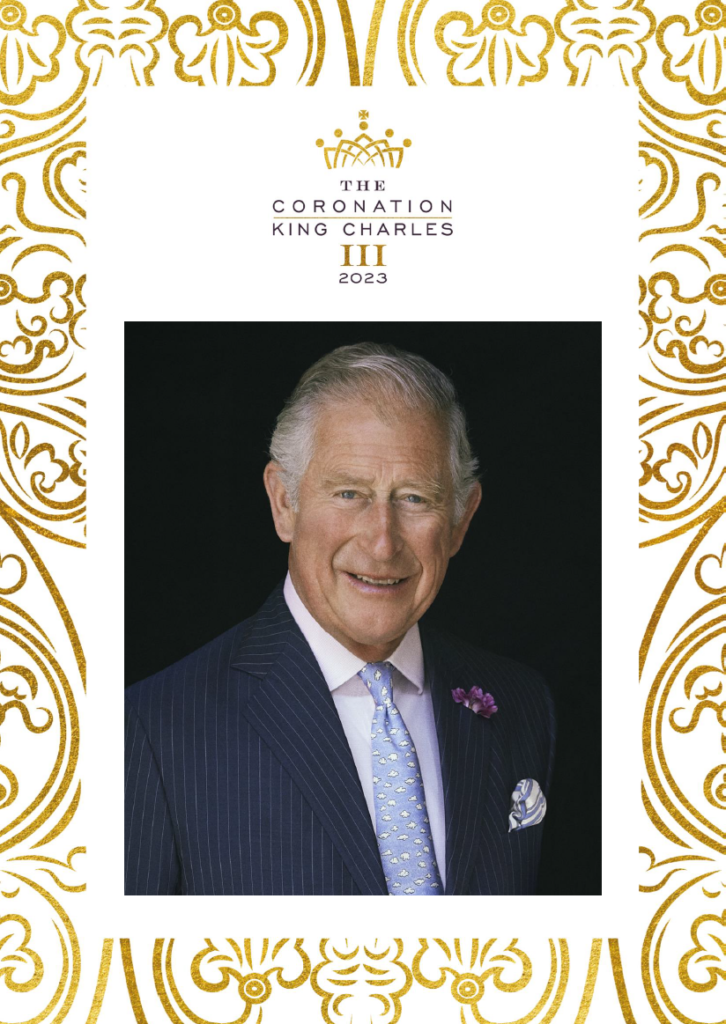
Prince (now King) Charles has long been a supporter of Homeopathy and his mother and grandmother before him.
If you live in the United Kingdom you could hardly have missed the Coronation of King Charles III, even if you so wished.
Whatever your views on monachy, few can doubt the new King’s commitment to certain causes.
Some years ago when Prince Charles, he co-authored wrote a book titled ‘Harmony’. I think it rather good. It is a theme that clearly dominates his philosophy of life; namely that we should strive to live in harmony with nature.
One quote in the opening pages is perhaps a good summary of his thinking:
‘if people are encouraged to immerse themselves in Nature’s grammar and geometry they are often led to acquire some remarkably deep philosophical insights.’
His studies into this ‘grammar and geometry of nature’ have resulted in him having strong views on farming, architecture and health. Needless to say he has faced more than a little criticism across the years.
Nevertheless many are at least sympathetic to the principles, and increasingly so. Whatever you may think, he does ‘walk the talk’ and on his farms and estates demonstrates what is possible.
Although best known for his views on architecture and the rural economy, Prince – now King – Charles has long championed Homeopathy.
If there was ever a cause for which a ‘thick skin’ is required, this is probably the one!
As Prince Charles, he was Patron of the Faculty of Homeopathy, and a supporter of Homeopathy at Wellie Level (HAWL) which works with the farming community. You can read his letter of support on the HAWL website (go to the bottom of the HAWL home page).
With justification, in the book ‘Harmony’ he challenges any who consider homeopathy as just placebo medicine, to explain why it works on animals.
As an aside, the principles of biodynamic agriculture share common ground with homeopathy also. Thus, it is not just humans and animals that benefit but plants also.
Sadly the scientific-materialist mindset resists thinking ‘outside of the box’. That ‘box’ is the biochemical model, that sees us (and animals and plants) as just sophisticated chemistry sets. A rather narrow view, in my opinion, and about which I have penned a blog before.
Homeopathy has a Royal History
Homeopathy has a long history within the Royal Family. In his book ‘Samuel Hahnemann, The Founder of Homeopathic Medicine’, Trevor Cook PhD FRSC, a former managing director of Nelson’s Homeopathic Pharmacy in London (est.1860), believes that the wife-to-be of King William IV, Princess Adelaide of Saxe-Coburg-Meiningen, was the first to use homeopathy.
Her uncle, Duke Ernst of Saxe-Coburg-Gotha, brought Hahnemann to Geogenthal (Thuringia, Germany) in 1792 as physician to be in charge of an asylum there. Queen Adelaide was an aunt of Duke Ernst’s second son Prince Albert who married Queen Victoria.
More recently, Queen Mary (1867-1953), Consort to King George V, is known to have revived the family interest in homeopathy.
Trevor Cook goes on to write:
‘Royal patronage now spans more than 160 years to include King Edward VIII (1894-1972) who, as Prince Edward, Prince of Wales, invariably carried his homeopathic medicines in powder doses in his pocket. His brother, King George IV (1895-1952), named one of his racehorses ‘Hypericum’ after the King had successfully been treated by the medicine’.
Hypericum is a homeopathic remedy to used treat nerve damage (e.g. crushed fingers).
A small box of homeopathic remedies also accompanied our late Queen Elizabeth II on her many travels.

Ainsworths Homeopathic Pharmacy holds the Royal Warrant to this day as you can see on the cover of their remedy kit.
Long live the King!
Long live Hahnemann!
I heard someone on the radio saying that we are living healthier and longer lives than ever before. In fact it is a mantra that is often stated. We take such a statement at face value because it seems to make sense, after all the average lifespan in the UK is just north of 80 years which is a good deal greater than the Biblical “three score years and ten”. And of course childhood mortality is now very low. So far, all for the good.
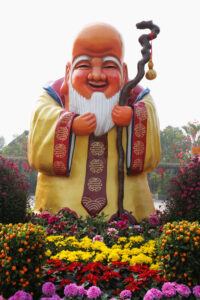
On the other hand, back in ‘lockdown’ when I cycled out into the New Forest and took a wander round a few rural churchyards, I was rather surprised to see people living to a good age a century of more back. Some into their eighties, which I suppose – being the strongest consitutions – would be ninety year olds of today.
I find much the same in rural churchyards I have visited elsewhere, though my analysis is hardly comprehensive.
Curiously, 34 seemed to be a hazardous age in one cemetery in the Outer Hebrides, my guide – a local man – was 43, and so I congratulated him on his achievement!
But seriously, it got me thinking about health. Are we truly healthier? What is the secret to living longer and healthier?
One of the wonders of the internet age is the ability to do a little armchair analysis. The NHS statistics service (NHSBSA) tells us that the cost of medicines prescribed in primary care in England was £9.4 billion in 2020/21, 55% of the total drug expenditure (hospital prescriptions making up the other 45%).
Seems to me that if we were truly living healthier lives, that longevity would not come at this cost.
That my wanderings have been into rural cemeteries in Britian is significant. I suspect the story in the industrial cities would be very different. Factory life was harsh. Social class was and remains today an important factor in health and lifespan.
So, my hypothesis could stand or fall on the data I choose to select (a subtlety not lost on those who write ‘scientific’ papers today, by the way).
Still, I will hazard a guess that rural communities who lived by the seasons, in unpolluted environments, ate simply, and worked hard but suffered low stress, were quite healthy. At a time when there was not much medical intervention either.
We need to understand why our drugs budget is so high. NHSBSA have some revealing statistical collections that tell us that:
Needless to say, the most deprived areas received the higher proportion of the prescriptions.
Drug cost is just a part of the picture. The drugs are a short term fix. In the longer term health conditions become more complex and more costly, especially where in-patient care is required.
How do you react to these figures?
Cardiologist Dr Assem Malhotra has some interesting observations – here is a recent interview with Dr Ken Berry MD on YouTube. It is worth a watch.
It should not come as a great surprise that the Malhotra and Berry conclude that the fundamentals of health for most of us are quite simple
I have written before about colour and diet, here is a nice photograph to illustrate the point.

Were it possible to go back in time and apply a light touch of modern medical practice, I rather think the longevity of our ancestors would match that of today, with better underlying health. By light touch, I mean simple steps to reduce infant death, handle trauma, and acute life threatenting conditions.
Towards the end of the interview Dr Malhotra explains the true cost to health of poor diet.
In this topsy turvy world is it not strange that ultra-processed food is cheaper than fresh simple food? Deprivation and disease go hand in hand.
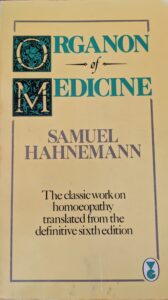
I suppose this blog should be about homeopathy, yet no mention thus far. Well, here is a snippet.
Last month I wrote about Dr Samuel Hahnemann, generally considered the founding father of homeopathic medicine, who makes it very clear in his profound book, The Organon of Medicine that removing obstacles to cure is the first step to health. Here are his words written in the early 1800s:
It is obvious that every reasonable physician will first of all remove the causa occasionalis; after that the indisposition usually disappears on its own.
Organon of Medicine, Aphorism 7 footnote (in part) – Dr Samuel Hahnemann
It’s the old saying “a stitch in time saves nine”. So what might you sew (or sow) in 2023?
https://www.instagram.com/p/CnMSdUPo5JW/
Prompted by the name on the door lintel in the photograph – this blog considers the role of the homeopath.
“Double, double toil and trouble; Fire burn and cauldron bubble. Fillet of a fenny snake, In the cauldron boil and bake; eye of newt and toe of frog, Wool of bat and tongue of dog…”
Shakespeare’s Macbeth Act IV
Well you get the idea….
I was intrigued – maybe a little taken aback – to read a recent editorial in The NewHomeopath (the Journal of the Society of Homeopaths) that homeopaths were the new witches!
True enough, the gender of the Homeopath today is most likely to be female; the mix for must be 20:1 in favour of women. Yet, none I have met would meet the picture of a witch.
Permit me a brief digression here. Bring to mind the stereotypical image of a witch and compare it to the male equivalent, the wizard. I suggest that one is artistically treated rather more favourably than the other, which might tell you something.
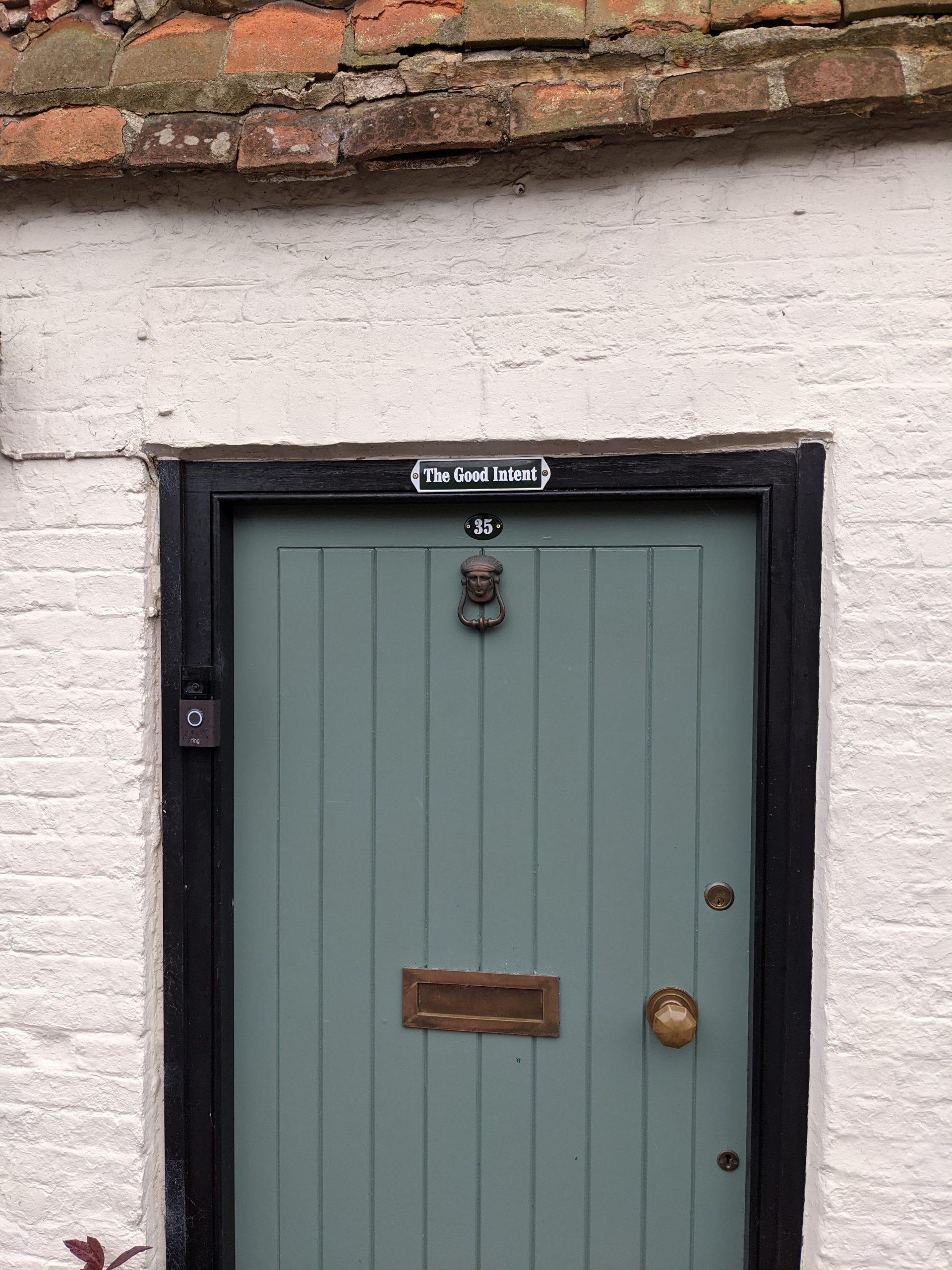
So, what has all this to do with the picture? Well it was the words “The Good Intent” above the door lintel that caught my eye as I walked past
I will explain…
Now, I happen to be a Church goer, and come across some fellow attenders (very genuine people) who treat homeopathy with great suspicion; possibly even a dark art.
You can guarantee, that any opinion goes no further than that; an opinion without much knowledge.
Still, to my mind, very strange.
The keyword is “Intent“. Otherwise put, what is one’s intention? In children’s Sunday clubs I have heard taught, “What would Jesus do?“, which rather hits the same mark.
It is our intention that is most important; in all things. And, I have to say from my experience of the many homeopaths that I have met, that their intentions are solely to help their clients to the best of their ability. And certainly not to engage in sorcerery!
Homeopathy does pose some interesting questions about who we humans really are. Are we just a bundle of molecules dancing in some sort of harmony? I touched on this subject before.
Our current understanding of the human body is remarkable tribute to modern science, but there are many mysteries still, and over time these mysteries tend to multiply rather than diminish. Who are we? What does it mean to be conscious, to be alive? These are big unanswered questions. Take a look at the work of the Galileo Commission here.
Complementary medicine in its various forms may not provide all the answers, yet its strength is in its recognition of both the material and non-material nature of man. This is the holistic perspective.
Returning to the matter of intention, a cursory recollection of recent news stories, will bring to mind plently of examples of bad intent. Sadly, all too often from within organisations that are held in high regard.
So, in short, I rather liked the name of the house in the picture.
Does it reflect the spirit of the owners, or is it two words to make those crossing the threshold pause for thought?
The Society of Homeopaths sets down clear requirements of its members which can be found here. Complaints upheld against practitioners are very rare.
Unfortunately, complaints of a vexatious and mischievous nature are significantly more common these days, often orchestrated by a small number of people whose world view is dominated by a rigid scientific materialist model (which roughly put says if you can’t see it it doesn’t exist).
They are entitled to their opinions of course. However, whilst constructive criticism can often be of good intent; destructive criticism rather suggests the opposite.
None are forced to try homeopathy, but it offers a different perspective on health which has proven to be of value for many.
Wishing you a good Christmas and good health. Next month, I will return to less combatative territory and consider homeopathy as first aid in the home.

Here are some ideas for self help with colds and flu. And little about homeopathy which can help too.
I caught a cold last week – in common with many others, it seems. Well, it is that time of year. Pre-pandemic, colds and flu were not newsworthy – but they are now. I shall not labour the point, but the media doom and gloom is not particularly helpful.
As we have all learned during these past months, respiratory infections are caused by viruses and viruses that tend to mutate.
The characteristics of the various offending bugs we can leave to the scientists, but when it comes to the counter attack, respiratory viruses seem to be rather slippery characters.
Fortunately most respiratory infections are self limiting – even Covid. Being sensible makes a significant difference to the outcome.
So what are the tips for self help with colds and flu? And what should we not do?
I just penned a short editorial for the The Herald (issue 414 p38). What could be said in 300 words is limited, but I emphasised the importance of good general health in building immunity.
Modern life with its cities and technologies is about as distant from the natural world as you can get. One of the gains from the environmental movement is a reawakening to that lost connection.
Here are three simple steps to reconnect:
Firstly, get a good night’s sleep. As the hours of daylight shorten, you don’t need to be a genius to infer that this is suggestive of more sleep. Sleep is a health regenerating process and a lack of sleep increases our vulnerability to infection.
Secondly, consider your eating habits. Eating may be pleasurable, but its real purpose is to supply the body with the necessary nutrients. The gut flora is known to be important in immune health. It is common sense then to focus on healthy fresh food.
Thirdly, get outside into the sunlight as much as you can. Living by the New Forest and the coast, there are plenty of options. Not only is exercise good for the body, it is good for the mind also.
Whilst nutrition should be the main source of vitamins and minerals, there is a logic to vitamin D (specifically vitamin D3) supplementation during the winter months.
Otherwise known as the sunshine vitamin, it is made by the action of sunlight on the skin. Reduced daylight and overcast weather mean that vitamin D deficiency is common in winter.
Vitamin D has many functions which you can look up online, but of particular relevance is its role in maintaining respiratory health. It is generally anti-inflammatory.
Daily supplementation in the range of 2000 to 4000 IU (international units) or 50 to 100 micrograms should be perfectly safe for adults (half the dose for under 12s).
Start low and increase as winter progresses, then tail off again as the days lengthen. As ever, take advice if you have particular health conditions.
Theoretically excess vitamin D can be toxic (elevated calcium levels and intestinal symptoms) but such events require massive doses over extended periods. In short, sensible supplementation is safe.
The supplement is mostly available as tablets or capsule of 1000 to 2000 IU tablets which is itself a guide to dosage.
You may recall a time when Mums gave cod-liver oil to her school age kids? Guess what, it is Vitamin D rich. Two teaspoons is about 1000IU
Here is a selection of articles / videos. The NHS dosage guidelines (just 400IU) seem to be rather conservative.
NHS Vitamin D Healthline Vitamin D Dr Seheult Medcram John Campbell PhD Epidemic Influenza and Vitamin D
We all do, and it may even be necessary that we do so in order to keep the immune system in trim. Or it could be a reminder to slow down, and metaphorically ‘recharge the batteries’.
So, here are the tips for self-help with cold and flu. What should you do? Or not to do?
In short:
When we get a cold it is popular to reach for over the counter medicines most of which contain Paracetamol or aspirin (pain / fever relief), and other ingredients like Pseudoephedrine (decongestant) that relieve your symptoms.
Strange as it may seem, your symptoms are your body’s curative reaction to the virus. Unpleasant, these may be, but they have a purpose. Fever, for example, stimulates the immune system into action.
Here is a short quote from Dr Russell Malcolm a medical doctor and homeopath in Scotland:
“avoid Paracetamol and Aspirin completely …. [they] have no curative power at all … there is evidence that interfering with this process can lengthen the illness and increase the incidence of complications.”

On my bookshelf is a small volume that I bought when my son was a baby 30 years back – in the chapter on respiratory infections, sore throats, colds and flu the author (American, Dr Leo Galland MD), puts it simply:
“I recommend rest, chicken soup and TLC (tender loving care). For severe infections with fever, lots of aches and/or uncomfortable congestion, I find short megadose therapy of vitamin C helpful.“
I’ll come back to vitamin C shortly.
Dr Malcolm also states “Flu is not a headcold”. As the old joke says, if a £50 note blows into the garden when you have a headcold, you’ll wrap-up and go out to catch it, with flu you surely will not!
Half a century earlier, Dr Dorothy Shepherd (1888-1952) said this:
“It is the fashion to call every slight feverish chill influenza; but if after the temperature has come down, the depression, exhaustion and weariness is such that it is too much effort to do anything, that life is really not worth living, you know you will have had influenza; after a mere feverish chill you will feel as well on getting up as you did before the attack.
Unfortunately many people take no notice of the danger signals of weakness and prostration, and insist on getting up, even returning to work before they are fit, thus laying themselves open to broncho-pneumonia…and sudden death’
‘During the feverish period the patient should be allowed nothing but raw fruit and fruit juices, and not synthetic bottled juices. Fresh oranges, lemon juice, apple drinks, grapefruit drinks at frequent intervals will cleans the system and prevent any undue strain being thrown on the gastric organs. No meat juices, no milk, are permissible. After the temperature is down, the diet may be increased and may include vegetable broth, Yeastrel drinks ( Marmite?), wholemeal toast. Gradually other foods may be added…“
No.1 rule then is REST. You may recall what happened to PM Boris Johnson when he tried to keep going through his Covid infection … viruses don’t respecter rank!
Modern society tends not to permit absence from work or school, which is a pity and probably counter productive …Covid, might remind us of old wisdom.
Vitamin C has a direct anti-viral effect that has been well researched.
Dr Leo Galland mentioned above, continued:

“To treat severe colds, viral infection such as sore throats or bronchitis, and flu, I find megadoses of vitamin C very effective…I recommend the highest dose you [or your child] can take. 1000mg an hour, until he begins to get loose bowels (Excess vitamin C…draws water into the intestines). This will establish [the] saturation point.
Stop the vitamin C until the next day, when you [or your child] should [take] 1000mg every 2-3 hours until the bowels become loose. Stop the vitamins again until the third day, when you should give 1000mg every four to six hours. Maintain this dose until the cold is over, then gradually cut the dose back over two weeks to 1000mg a day.
The anti-viral effect of vitamin C depends on getting the highest level possible into the tissues.
Is it safe? Very: not only against viruses but also acute allergic reactions. When should you not give vitamin C? If you [your child] has kidney disease or is too sick to take food and liquid along with it.“
This is the protocol I follow myself. Loose bowels do not result in my case, but they may for you, everyone is different.
Zinc has a important function in supporting immune health. A healthy diet should suffice for daily needs, but supplemention at 20-40mg per day when you are sick can be helpful.
The herbal remedy Echinacea can also help on first signs of a cold or flu. But Echinacea should be taken for only a few days (say a week) as thereafter it can be counter productive. Follow the manufacturers guidance on dosage.
Most respiratory infections are self limiting and are more likely to be so, if you follow the good advice above. Homeopathic medicine can undoubtably speed recovery but selection of the correct remedy takes a little skill, but can be learned. First aid kits are available for home use.
Should you have a viral respiratory illness that is lingering on uncomfortably, and wish to try a homeopathic approach please call and leave a message or text (see Contact) and I will call back – the ‘Discovery Call’ arrangement is for clients with longer term issues. (Expect a nominal charge of around £10 for any remedy sent).
However – and very importantly – seek immediate medical help (GP or A&E) if your condition is getting worse and especially if you have breathing difficulties.
Isn’t this a fantastic looking flower? It is an ornamental hybrid of the common onion from which the homeopathic remedy Allium Cepa derives.

The name which may derive from two Celtic words “all” and “cep”, meaning “hot” and “head”. In full bloom the flower is indeed like a head – a big beautiful sphere.
The onion family includes garlic and leeks. Plants used nutritionally and medicinally for centuries. Today the medicinal benefits are still recognised – here is one article – read more
In folklore, even in the 19th century, placing sliced onions around the home, or in a bag worn around the neck was considered to protect against contagion during epidemics.
Perhaps we should revisit past wisdom, given the current (Covid) challenges? But I suspect sending your children back to school with a bag of chopped onions around their neck might not be popular?
When chopping onions for the cooking pot streaming eyes and runny nose is all too familiar! This is “coryza” or “rhinitis” in medical parlance.
As a homeopathic medicine, one paarticular use of Allium Cepa is in the treatment of an attack of “hay fever”, whose symptoms of coryza, as you all know, are rather similar to those from chopping onions. The nasal discharge is acrid and that from the eye bland.
The homeopathic core principle is “like cures like”. This means giving a medicine that mimics the symptoms suffered.
Homeopathy supports the body’s attempt to cure. It helps it over “the hill” that needs to be climbed.
As I wrote last month “Jaw Jaw is better than War War”
The body speaks its language – it informs; we must listen and act accordingly.
The runny nose of the common cold can be similar to the characteristics of Allium Cepa, but in this case it may be best to suffer the inconvenience as the discharge from the nose has a purpose – namely to eliminate the virus.
Sometimes it is best not to supress symptoms. That includes the use of over the counter remedies such as LemSip and so on. Yes, you feel better but you are hampering the healing.
Symptoms, from a homeopathic perspective, are not just an inconvenience – they point the way to cure.
They inform.
Cutting edge Quantum Physics tells us that our entire universe is “informed”. Indeed, it tells us that we are “informed” – right from the moment of our birth to our last breath.
Current thinking is that the brain is a sort of transmitter / receiver, as much as a pseudo computer for processing our thoughts and bodily signals.
So, the brain may be receiving “downloads” – something like the downloads to our electronic gadgets. Fascinating.
Last night, courtesy of the Scientific and Medical Network I listened to Dr Doug Matzke talk about his research into quantum computing.
He has a new book titled “Deep Reality” – tad over my head mathematically – but the fundamental role of “information” in nature is becoming clear.
Homeopathy is information medicine, born ahead of its time.
Symptoms are key to treatment in Homeopathy just as they are in orthodox (allopathic) medicine, but the interpretation is different. Winston Churchill once said that “Jaw, Jaw is better than War, War” and I suggest that his sentiment has some relevance in the practice of medicine.

Symptoms are symptoms but the interpretation can be different.
Take a look at any text on modern drug classes and you can clearly see that modern western medicine is on a war footing. There are anti-biotics; anti-depressants; anti-fungals; anti-inflammatories; anti-virals…just as we have anti-aircraft; anti-tank; anti-personnel and so on.
This is “War, War”.
Clearly modern pharmaceuticals are effective, but they are not always curative in the long term. There is quite a queue in my local chemist for repeat prescriptions ..
Most modern drugs have not been around that long, the first antibiotics only appeared in the 1930s. We tend to forget that.
Yet mankind has suffered sickness, for thousands of years…and been healed. Naturopathic and hydropathic “cures” were once the norm..at least for those who could afford it. Not that such treatments were always successful either.
Let’s be honest, symptoms are inconvenient at best, and often worse – so a magic bullet has much in its favour – especially in an impatient age.
The trouble is that the “enemy’s” protest may have virtue. Perhaps a little “jaw jaw” might bring about a longer lasting peace?
Of course to “jaw jaw” you have to understand the language.
Symptoms are the body’s language. The attempt of the body to cure itself.
Easier then to shoot first, and ask questions later! This is suppression.
But what if the “enemy” regroups and shoots back. An uneasy truce might be the best result.
Homeopathy is “Jaw, Jaw” medicine. It is guided by the “Law of Similars” – often simplified to “like cures like”. Homeopathically this means finding the medicine that best imitates the symptom picture.
The subject is covered in more detail in this article by the late Dr Stuart Close:
The general philosophy in homeopathy, naturopathy, and other traditional / complementary therapies is that the body tells you what it needs to cure itself.
Therefore, rather than supressing the symptoms, they should be encouraged. A sort of swords into ploughshares approach!
Here is a simple example:

Gelsemium, homeopathically prepared from a plant of the same name, has particular characteristics that come from “proving” the medicine on healthy people, knowledge of its herbal properties, clinical experience and so on.
Students of homeopathy learn the phrase “droopy, drowsy and dull”, as the Gelsemium symptoms are just that:
It is one of a number of medicines that have helped Covid patients – but ONLY if their symptom picture matches. The remedy stimulates an immune response that reinforces the action of the body and speeds up cure.
It is a useful remedy which you will surely find in any homeopathic first aid kit, such as shown in one of my recent blogs
*Interestingly it is said that, Gelsemium – presumably in herbal form – was once used to instil fearlessness in soldiers . In truth this “courage” was more likely to be loss of fear through instilled apathy (what do I care if I live or die…)
I recently listened to a fascinating talk by botanist and homeopath Michal Yakir about the plants used in homeopathy today. She recently published a magnificent book titled Wondrous Order.
Her thesis is that plant families (known as Orders) have meaning in mankind’s evolution and the application of homeopathic medicine.
More than 50% of homeopathic medicines are of plant origin. Most of the rest originate from minerals or elements.
Over millions of years new Orders of plant life have evolved, from simple plants like mosses and ferns, to ever more complex flowering plants.

Michal perceives that each “Order” represents a theme in our development from infant to adult. These correlate with our psychological maturity. This is somewhat age independent. Maturity doesn’t always come with age!
Similarly within each Order sub-classes have evolved. Here Michal perceives stages of emotional and physical development. In contrast, this is generally age dependent.
A a homeopath she finds that these patterns can help her to find the best medicines for her clients.
In a similar manner another well established Dutch homeopath Jan Scholten has found symmetry in the elements of the Periodic Table. These elements are the basis of the second largest class of homeopathic remedies, the minerals. He too has studied the plant kingdom https://janscholten.com/
Extraodinary work by two great minds.
Let’s take a couple of examples:

Calendula (Marigold), belongs to the Aster family. It has healing properties and as a herbal product it can be used as a mild antiseptic cream to heal small wounds.
However, homeopathy considers not just the physical but also the emotional / mental. The wound doesn’t have to be physical, so (to quote Michal) a person could be “as if of a wounded person”; “don’t touch me!”

Symphytum from the Borage family, is better known to gardeners as Comfrey, and in olden times as “bone-set” because of its use in helping broken bones to heal.
Both the above plants are in the same plant Order (Asterideæ). In both there is a theme of avoidance of touch, of being hurt – obvious with a wound or broken bone, perhaps less so in the emotional sense. Such emotional oversensitivity might suggest an impediment to inner growth
Over the last century or so, the objectivity of science – for all its benefits – has set humankind apart from nature, rather than being a part of nature. This is unfortunate as we are subjects not simply objective observers in the story as Michal and Jan both suggest.
Environmental crisis, forest fires and a pandemic, should be timely reminders of our true origins. But re-discovering our roots is a challenge be it at the personal or collective level.
All a little complicated? But is it so surprising that our story depends on the plants we eat, and the minerals from which they grow. They tell our story…
If you are old enough to recall TV from the 1990s, you doubtless remember Noel Edmonds and the pink character with yellow spots called Mr Blobby which he introduced to viewers. Clearly, Mr Blobby still has his fans as you can see from this website https://www.mrblobbycollection.com/.
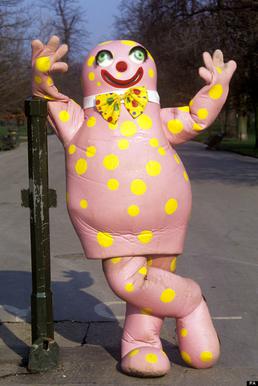
Mr Blobby even has a Wikipedia page https://en.wikipedia.org/wiki/Mr_Blobby Here is the image from that page:
Suffice to say, I do not seek to extol the virtues or otherwise of this icon of 90’s British humour, but would simply like to suggest that the human being is more “blobby” than perhaps you might think.
Don’t worry, this is not going to be a blog on the matter of expanding waistlines, rather it is about our true nature.
You see, our bodies appear solid, but this is somewhat an illusion as water makes up about 60% of our weight. Hydrogen and Oxygen are the elements of water (H2O), and these together with Carbon, Nitrogen, Calcium and Phosphorus add up to 99% of human body, the remainder being trace elements.
The human body comprises some 75 trillion cells apparently (who counted?) each of which doing what it needs to do: building; replicating; communicating; dying etc. Some cells last for just a few hours others for years, but no typical cell lives as long as a typical person. Unbeknown to us, our body is continually being replaced. It is estimated that it takes around 7 to 10 years to complete the make-over. Amazing!
So in fact we are more fluid than solid. Which is what brought the “blobby” term to mind.
The question is what happens when we get sick? Dr James Tyler Kent was a notable American homeopath working in the early years of the twentieth century, and his “Lectures on Homeopathic Philosophy” remain important to this day. In the first lecture he considers the “The Sick”. He notes that medicine is mostly concerned “with the ultimates”, that is to say the visible results of disease which, he argues, is only a part of the story.
It is “the real nature of man” that must also be considered, says Dr Kent. But what is this “real nature”?
Kent suggests that Man (in the generic sense) is “will and understanding” and the physical body is just the house in which he or she lives. Our “real nature” then is much more than the physical body, indeed our “will and understanding” may be what first and foremost needs attention before physical healing can take place.
Since Kent’s time science and technology has advanced our understanding of body biochemistry and delivered many new therapeutics. Yet the concept of “will and understanding” remains somewhat unexplored in mainstream medicine. How a person sees, feels and interacts with their world remains at the core of homeopathic practice, which is why it is termed holistic medicine.
“Due to overconsumption of de-natured food, and a lack of exercise and fresh air, many people, especially in the second half of their lives, often become caricatures of themselves … Nowadays we rarely see a really beautiful and healthy looking person … we are either too far or too thin .. or legs are swollen, our feet flat, our backs, bent, our necks stiff. We lose our hair, suffer from dental decay, headaches, flatulence, constipation and depression; we tire quickly and worst of all, many of us no longer enjoy life. Many people never feel really well“. Naturopath, Jan de Vries, from 10 Golden Rules For Good Health (2nd edition 2008)
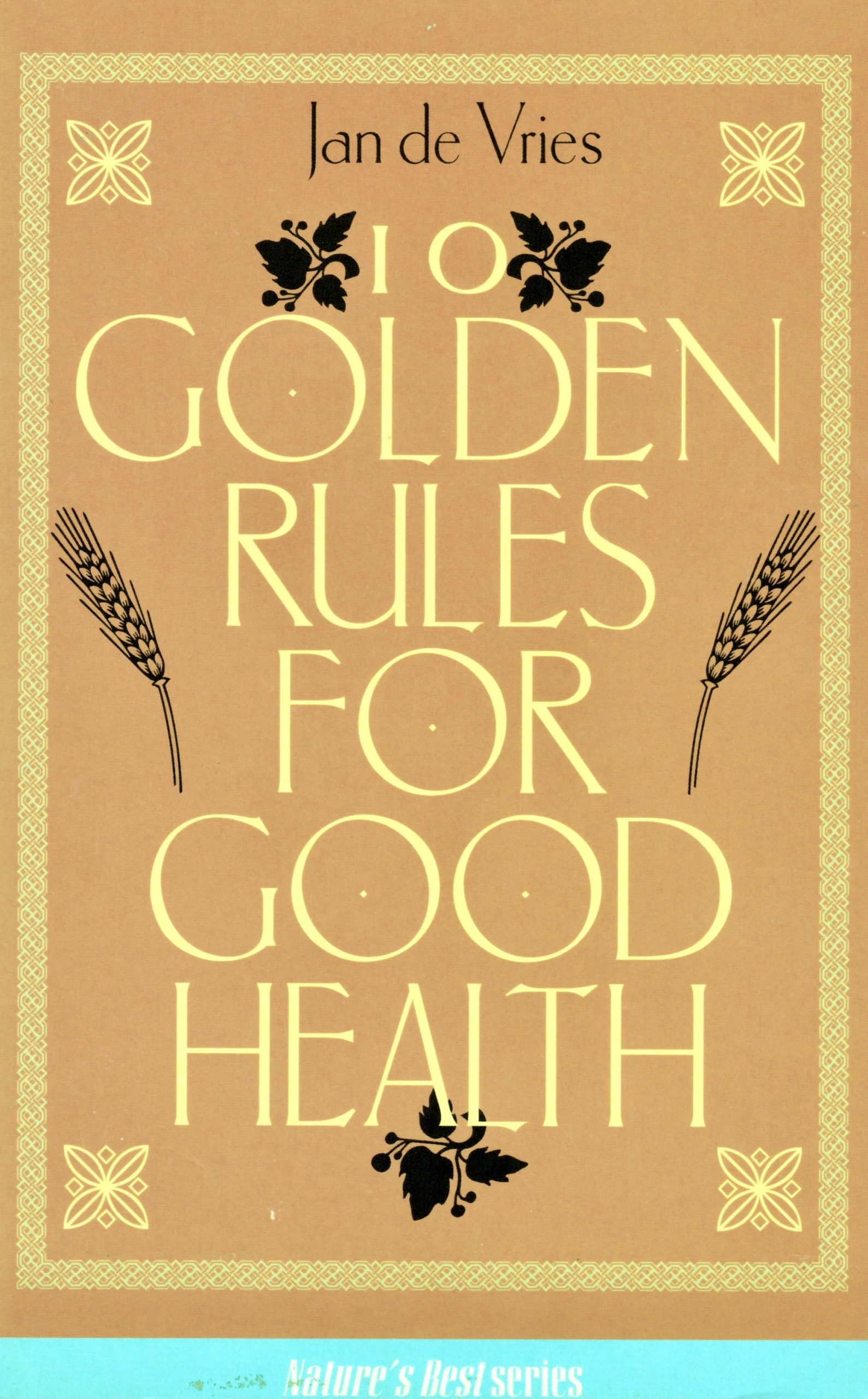
Not a very welcome message, perhaps, but a well meaning one from one of the most notable Naturopaths in the UK and beyond in recent years.
Alas, he is no longer with us, but for many decades Jan de Vries had a clinic in Troon, Ayrshire and people sought his advice from near and far.
He even had a slot on Gloria Hunniford’s BBC Radio show. He worked a 90 hour week which included writing many books!
I once had a consultation and his busy clinic was like a hospital out patient dept. He was much loved and is sadly missed.
The Naturopathic approach to health is focuses on the basics, recognising that the self regulating nature of the human organism works best when treated with respect. His five pillars to good health were nutrition, digestion, elimination, circulation and relaxation.
The 10 Golden Rules expand on the five pillars to include such as sleep, and mental health and mental attitude. Top of the list, always, comes nutrition. He tells us that the diets of western industrialised countries – especially the USA and Europe – have changed more in the last 100-150 years, than across millennia before.
Processed foods, sugar, excess alcohol, industrial farming and so on, are not what the body needs. Instead seventy percent of our diets should be of plant origin, and raw fruits and vegetables should be an important part of daily nutrition. Medical science has also come to appreciate the relationship between a healthy immune system and a healthy gut.
Obesity seems to have become rather an epidemic these days. In the past the poor were thin, as is still the case in the developing countries but the opposite seems to be the picture in the western world. And it is the western world that has suffered the most in this Covid-19 pandemic. Food for thought?
